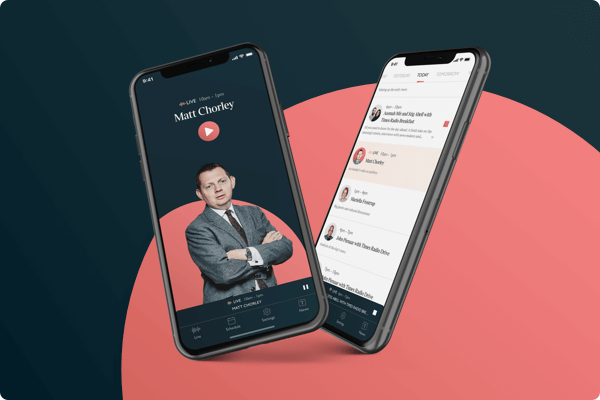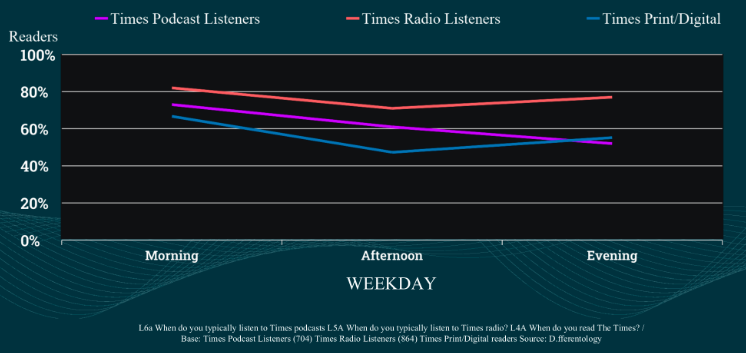
Once upon a time, the addition of a Sunday edition was considered innovation enough.
But today, news publishers have expanded their offering – to audiences and advertisers alike – across a plethora of new platforms.
Quantifying the benefit brought by a cross-media footprint has always been murky. But News UK is one publisher that aims to find out. So its Times and Sunday Times asked research consultancy d.fferentology to survey 1,454 of its readers.
The Times’ portfolio has expanded in recent years with touchpoints including a radio station.

D.fferentology identified two categories of “incremental audience”:
- Long-time Times readers who also engage with at least one new Times brand.
- New or non-Times readers who nevertheless use at least one new Times brand.
Publishers get a cross-platform uplift
The survey found that Times Radio and Times podcasts have been a driver of new premium audiences for the core news products:
- 34% of Times Radio listeners went on to purchase a Times subscription.
- 24% of Times podcast listeners did the same.
That is because this new kind of touchpoint gives a publisher the opportunity to demonstrate its approach, tonality and value in a medium that may otherwise not have engaged the audience.
Eight in 10 Times Radio and podcast listeners said they had thought differently about the overall Times brand since they started listening.
And these channels don’t appear to cannibalise each other. Amongst these incremental audiences, consumption appears consistently high throughout the day.

Cross-media ad campaigns perform better
Of course, in their exertions and extensions to new channels, publishers are not just trying to enhance their own business. They also aim to give advertisers a more powerful offering.
According to data from Radiogauge Predict, the radio ad campaign effectiveness tool from the commercial radio industry body Radiocentre, a cross-media campaign across three publisher platforms – radio, press and online display – creates a quartet of brand uplifts.

“This is an exciting piece of research that demonstrates the evolution of The Times brand from a print news business to a digital first news and lifestyle business,” says Tracey Hendle, agency development partner at News UK, who commissioned the research.
“The addition of audio opens new opportunities for our partners to build more diverse and integrated communications, at a multi channel level and within the context of The Times brand.”
Finding the new incrementals
Times executives like Hendle are getting excited that platform combination adds a “new dimension” to their offering. But, when it comes to incremental audience, who is this Generation Overlap, really?
D.fferentology’s survey shows new-platform Times audiences are more likely 18 to 34 years old than print-only consumers, highly likely to be in the ABC1 demographic and significantly more likely to have young families.

What is more:
- 67% like to try new products.
- 54% always do so when their favourite brand releases a new product.
- 63% like brands that echo their own beliefs.
- 57% are drawn to brands with a clear purpose.
For publishers and their advertisers, that purpose seems clear – the pot of gold isn’t at the end of a rainbow, it’s at the centre of a Venn diagram.